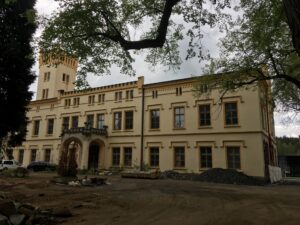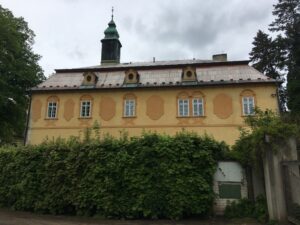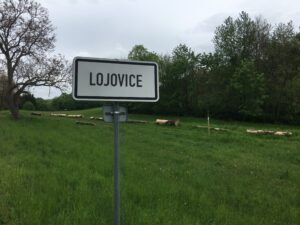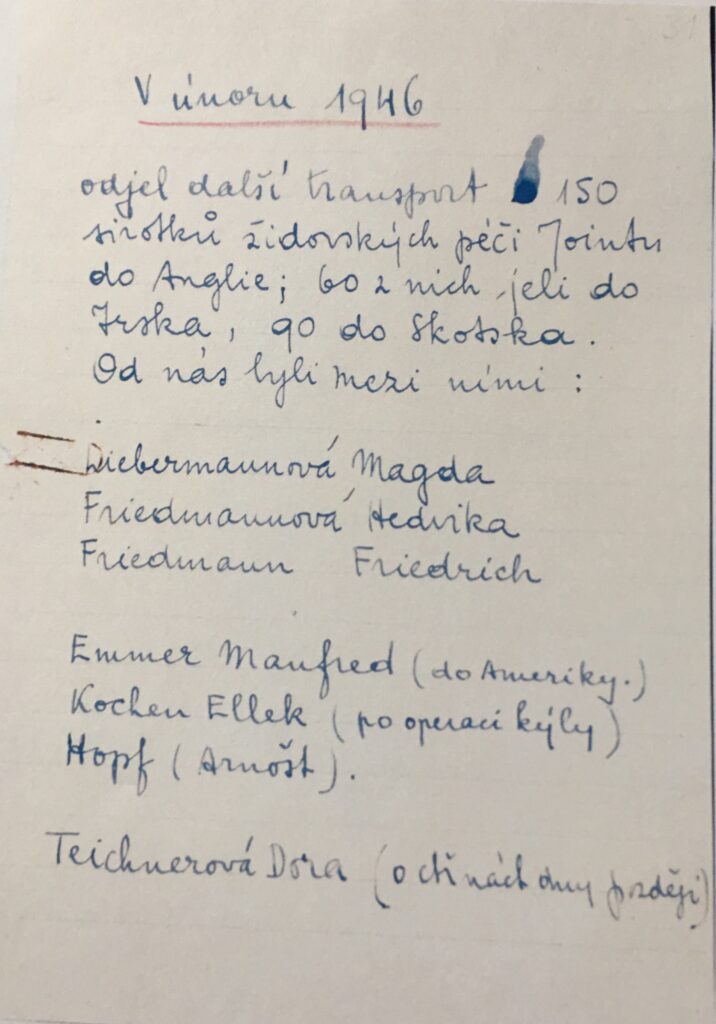Caring for child Holocaust survivors in large country houses was not a uniquely British idea. A series of children’s homes were set up immediately after the end of the Second World War in castles in Czechoslovakia, south of the capital, Prague. Many of the Boys were to pass through them.
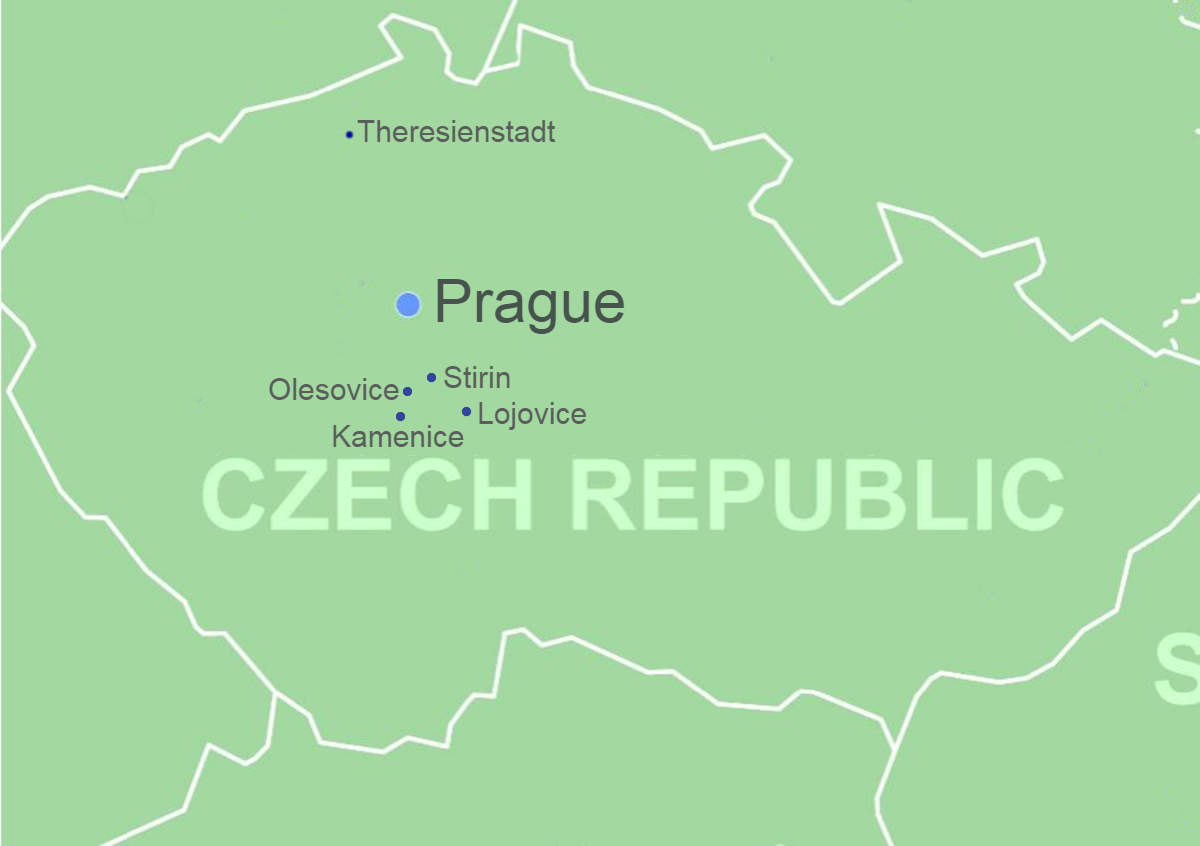
The homes were organised by Premysl Pitter, a Christian humanitarian and pacifist, who in the 1930s had cared for orphaned children in Milic House, which was also an after school club in the working class Zizkov quarter of Prague. Pitter and his life-long companion Swiss born Olga Fierz, continued to help Jewish children after the Nazi occupation despite the dangers. They delivered food parcels to families under the cover of darkness and when the moment of deportation came, they provided families with the supplies they needed for the transportation.
Immediately after the liberation, Pitter was appointed to the Czech National Council and he went straight to the former Theresienstadt ghetto to look for ‘his’ children. He discovered that they were no longer alive but that there were hundreds of other small children and adolescents whose lives were threatened by a typhus epidemic. In order to save the youngest, Pitter organised the removal of all those capable of travelling.
On 15 May 1945, Pitter requisitioned four castles, which had been confiscated from their former German owners, in the Aktion Zamek (zamek means castle in Czech). The castles were in a cluster of villages called Kamenice, Lojovice, Olesovice and Stirin, about 25km (15 miles) south of Prague. It was in Czechoslovakia that the youngest members of the Boys had their first experience of living in large country house hostels.
On 22 May 1945, Pitter brought the first 40 Jewish children to their new home in Olesovice by bus. A supper of white rolls, butter, eggs and sweet semolina was served in the dining room under a white, stuccoed ceiling illuminated by huge chandeliers. The children were frightened that the whole thing was a Nazi trick. Many had been filmed in the Nazi propaganda film made in Theresienstadt. One immediate issue for Pitter and his staff was the noise the children made as they shouted at top of their voices, a habit they had picked up in the noisy overcrowded ghetto.
On 2 June, more children from Theresienstadt arrived at the elegant manor house in Stirin. By July 1945, Pitter was caring for 150 children who had been liberated in the ghetto.
The documents in the Premysl Pitter archives at the Comenius National Pedagogical Museum in Prague, however, show that 37 of the Boys spent time in the castles and that the story of the smallest children who came as part of the first group of the Boys was a story within a story. They had nearly all been born in Austria, Czechoslovakia or Germany. They had spent months or years in the ghetto some arriving as babies.
A total of 32 children of the 37 children that were cared for in the castles flew to Great Britain as part of the first group of the Boys that left Prague in August 1945. They remained in the castles until the moment of their departure. The night before they left there was a special meal cooked over a campfire in fields. The next morning, they were woken at dawn and taken by bus to the Belgicka orphanage in Prague. There they joined the first group of the Boys and were taken to the airport. It is for this reason that the youngest members of the first group do not appear in the iconic picture of the group taken in Pragues’ Old Town Square in August 1945.
Milic House continued to operate and after the war many orphaned Jewish children in Prague found their way to the home and from there they were placed in the castles for recuperation. A further six members of the Boys, who were among Pitter’s children, left for the UK in February 1946, as part of the third group of the Boys. One additional member of the Boys, Abraham Herman, who had been in Stirin castle, came to the UK via Germany in 1947 to join his brother.
A total of 37 members of The Boys were cared for in Pitter's castles. This was less than 10% of Pitter's children. Between May 1945 and May 1947, 810 children were cared for in Pitter’s castles. In Czechoslovakia, however, Pitter was a controversial character, as he cared not only for Jewish children but also for German children orphaned in the brutal expulsion of the country’s German population. It was a move that cost Pitter his seat on the Social Commission.
The manor houses were full of beautiful art works and had large libraries of German books and the children were in close contact with the children in the other castles which were all within walking distance of each other. There were daily lessons, even in Latin, walks across the beautiful countryside meadows and frequent Bible sessions. Despite the emphasis on Christian teaching, correspondence in the archives in Prague shows that Pitter wanted his Jewish children to remain as a group, growing up surrounded by those who had had similar experiences.
The documents show Pitter believed the children would spend only a short time in Britain before being sent to British Mandate Palestine. In the UK Pitter’s wishes were either not known, or simply ignored. After their arrival in the UK, the youngest children were placed under the care of the child psychologist Anna Freud, the daughter of Sigmund Freud, and some were put up for adoption by British or American families. The majority of the other children saved from Theresienstadt by Pitter that did not travel to the UK with The Boys went to Israel and were brought up together on a kibbutz.
After the communist coup, Pitter and Fierz fled Czechoslovakia and his story was written out of the history books. He died in 1976 in Switzerland.
Associated Boys:
- Adler, Wolfgang
- Auerbach, Judith
- Berger, Josef
- Berlowitz, Asta
- Berlowitz, Jakob
- Berlowitz, Samuel
- Cohnheim, Avigdor
- Emmer, Manfred
- Esterreicher, Tilla
- Felsenfeld, Samuel
- Folkart, Lydia
- Friedmann, Fritz
- Gruener, Sylvia
- Haase, Jurgen
- Harringer, Peter
- Herman, Abraham
- Hopf, Arnost
- Husserl, Zdenka
- Jakubowic, Armand Otto
- Josef, Gad
- Kamaryt, Ruth
- Kochen, Ellek
- Kohn, Hans
- Lazarus, Berl
- Muench, Denys
- Muench, Tanya
- Rafael, Margot
- Rosen, Kitty
- Rosenbaum, Briggita
- Rosenthal, Bella
- Rowlevski, Gittel
- Schwach, Kamilla
- Singer, Judith
- Sonnerschein, Letzi Feige
- Spiegel, Jona
- Teichner, Dorothea
- Wrobel, Peter
- Zahler, Elfriede
